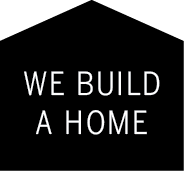When Mark and I decided to move forward with the build of our home, we decided to take on the heavy task of acting as general contractors, together. We knew it would be a sacrifice, with extra hours into our evenings and weekends, but fingers-crossed, it would be a short-lived one. Since we had two toddlers already, we weren’t giving up any kind of social life to speak of. And we were both self-employed, with a good deal of control over our schedules (minus the toddlers factor). Shortly before breaking ground, however, an exciting full-time job opportunity came my way, as they do when you least suspect them, and I took it. Leaving Mark to handle the build almost entirely solo, with me acting as the annoying backseat driver, into our evenings and weekends.
Full disclaimer: who am I kidding? I had/have no business acting as a GC anyhow, but I was ready and willing to learn. In any case, I resigned to understanding that I was contributing to the house in other ways. Making a steady paycheque and putting food on the table. Still, not quite what we planned for.
Mark has done exceptionally well, all things considered. There have been ups and downs in our learnings, from budgets extended to pigeons roosting. With the delays incurred due to the floors, and standing on site, seeing the state of things, I was starting to see our move-in date slip further and further away. I wasn’t about to let that happen. It’s crunch time. Our older daughter is going to school in September. Come hell or highwater, we need to be in the house in August. So we sat down together one night and project managed the shit out of our house.
If you remember from our previous project management post, our binder is in a state of disarray and our Gant charts have fallen behind (ie. pretty much non-existant). So for starters, we downloaded all the information that was in Mark’s head to a free tool/app called Trello. We’ve both had some experience with project management methods like Agile and GSD (get shit done, as my office calls it), so we borrowed some of these methods on our house. The list is a mile long, but we are getting through it, one task at a time. It will be done. Oh yes, it will. Every night we check in with eachother to see how we’re doing, what tasks need to be shifted or altered, and we’re getting shit done. We’re pulling together, in our race to the finish line.







